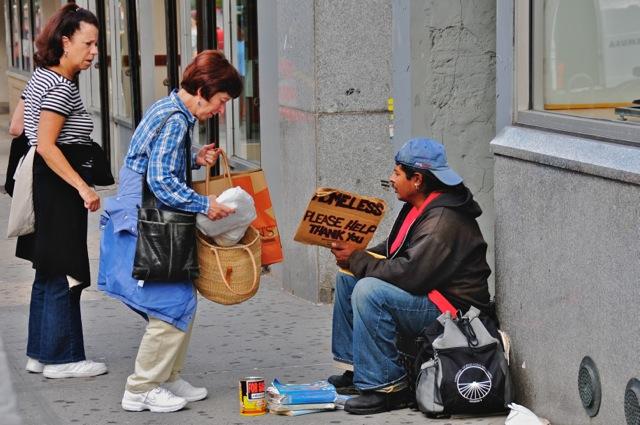Thanksgiving for the Homeless
Not everyone celebrates Thanksgiving
The word “Thanksgiving” has long lost its original meaning, which is obvious by the way most of us talk about it and even prepare for it. Many students at MHS participate in the Morris Township Turkey Trot, which takes place annually on Thanksgiving Day in Morristown, in anticipation for all the calories they will consume later. One student described it as a way to avoid “feeling guilty for eating so much at dinner.” Other students worry about the weight they gain around this time of year, which is a source of stress for most Americans as well. Some unique others with fast metabolisms worry that they won’t have the stamina to power through all the different courses at dinnertime.
No matter the sentiment about Thanksgiving, one thing that most middle-upper class Americans all have in common is the enormous amount of food they prepare for and consume on the day.
On Thanksgiving, over fifty million turkeys are consumed in America. If the average turkey weighs 30 pounds, and the average person usually consumes 2 pounds of turkey in one sitting, that means that 1 turkey can feed 15 people. That means that 50 million turkeys can feed 750 million people, which is more than double the population of the U.S. Theoretically, this means that every single person in the United States could have had 4 pounds of turkey on Thanksgiving, according to how much turkey is consumed. However, this is not the case. Millions of lower income families in the U.S. who experience food insecurity would not take part in the excessive turkey eating. For those living below the poverty line or those who are homeless, turkey is not even an option.
Most of America’s homeless are not the stereotypical “homeless” that sleep on the streets. More than 80% are bound to homelessness by their economic situation, and live as a familial unit. The rise in housing costs in recent years, paired with a stagnant income rate, results in more homeless Americans than ever before. More than 1.6 million Americans were homeless as of 2010, and the number has grown since then. Their Thanksgivings were spent in homeless shelters or soup kitchens. Only 3% of all soup kitchens in the U.S. serve three meals a day, and the majority serve only one meal a day. This means that Thanksgiving dinner is simply not a possibility for most of the homeless in America.
Even if a handful of homeless families were able to eat dinner at a soup kitchen, their meal would still be drastically inferior to ours, in terms of nutritional value and quality. The average meal served at a homeless shelter comprises of just over 1,000 calories. The average Thanksgiving meal, however, comes out to around 3,000 calories. That doesn’t even account for the leftovers that we consume over the weekend, which add another 2,000 calories each day. Because Thanksgiving meals are so dense in fat (i.e. butter, gravy, and pie), we consume many more calories than we usually do, and we definitely outdo the homeless by at least four times.
America’s poor and homeless do not have the luxury of choosing a turkey or preparing dessert for their families. Most are wracked with worry over unemployment and housing situations, which can remain unresolved for months and even years. Thanksgiving Day serves as a reminder to them of how little they have.
Though we cannot be blamed for how much we have and how much we are able to consume on Thanksgiving, we do need to acknowledge our excess consumption on this holiday. Our local soup kitchen in Morristown serves breakfast and lunch on Thanksgiving Day. Consider volunteering some of your time to help at the soup kitchen, or perhaps donating to a food drive. Thanksgiving is not only a time to eat until you can’t eat anymore; it’s also a time to give.

